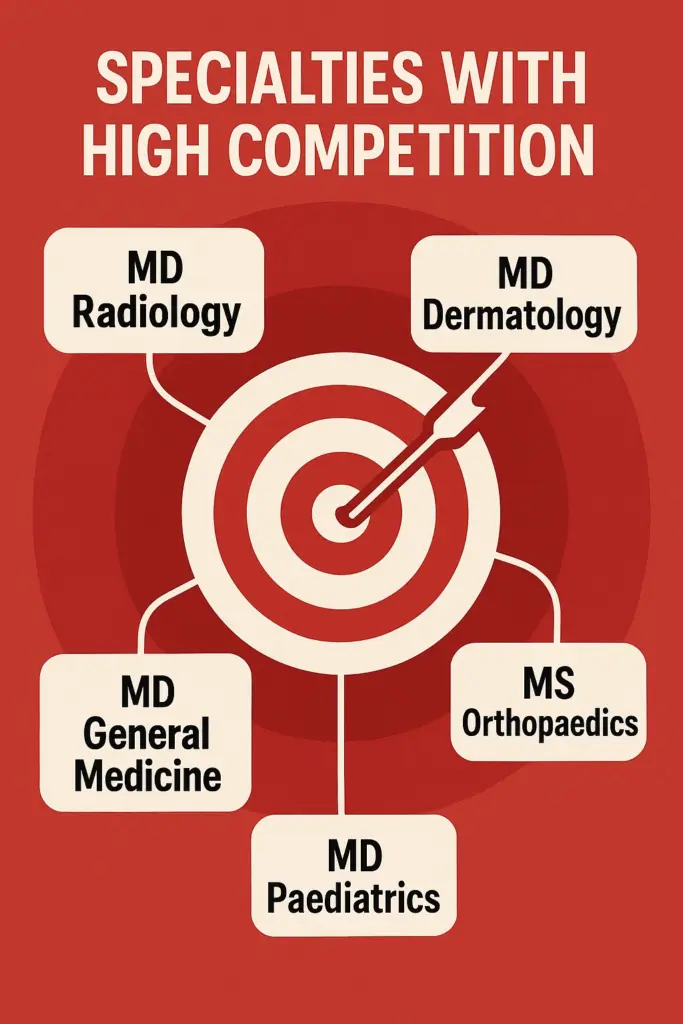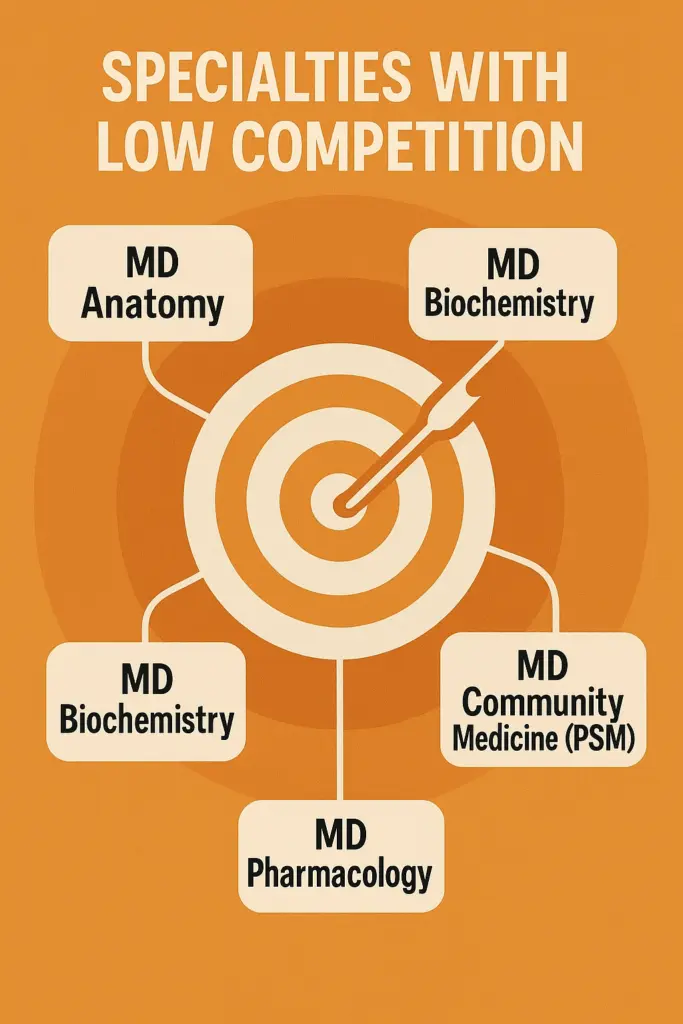The decision of which postgraduate medical specialty to pursue after MBBS is one of the most crucial career choices for any doctor. With NEET PG as the gateway, students often face a confusion: should they compete for high-demand specialties that attract the majority, or consider low-demand ones that are less competitive but still hold meaningful opportunities?
This article breaks down the difference, provides examples, and highlights key factors to guide students in making the right choice.
What Do High-Demand and Low-Demand Specialties Mean?
- High-demand specialties are those where competition for seats is intense because of their prestige, income potential, or broader career scope. Examples include Radiology, Dermatology, General Medicine, Pediatrics, and Orthopedics.
- Low-demand specialties attract fewer applicants. They are often academic or research-oriented, contributing significantly to medical education and public health. Examples include Anatomy, Forensic Medicine, Biochemistry, Community Medicine, and Pharmacology.
Why Some Specialties Are in High Demand
- Higher earning potential: Radiology and Dermatology are financially rewarding, especially in private practice.
- Work-life balance: Dermatology and Psychiatry attract students who prefer predictable schedules.
- Prestige: Medicine, Paediatrics, and Surgery are traditionally respected choices.
- Future opportunities: General Medicine and Paediatrics serve as entry points to super-specializations like Cardiology or Neurology.
- Global scope: Some specialties are better aligned with international healthcare needs.
Specialties with High Competition

- MD Radiology: Central to imaging and diagnostics; limited emergencies, strong career scope.
- MD Dermatology: Rising demand due to cosmetic procedures; good work-life balance.
- MD General Medicine: Broad practice, essential for super-specialties.
- MS Orthopaedics: Needed for trauma, sports medicine, and joint replacements.
- MD Paediatrics: High demand for child healthcare; rewarding but often involves emergencies.
Specialties with Low Competition

- MD Anatomy: Focuses on academics and research; stable teaching jobs but little private practice.
- MD Forensic Medicine: Deals with medico-legal cases; limited but specialized opportunities.
- MD Biochemistry: Research and diagnostics; important for pharma and lab careers.
- MD Community Medicine (PSM): Public health focus; stable lifestyle, vital for government programs.
- MD Pharmacology: Research-based, pharmaceutical industry roles; limited patient interaction.
Factors Students Should Consider
- Personal Interest: Surgery demands skill and stamina; research-oriented students may prefer Pharmacology or Biochemistry.
- Lifestyle: Dermatology or Psychiatry offer balanced hours compared to General Surgery or Paediatrics.
- Career Goals: Decide whether you want clinical practice, academics, or research.
- Financial Aspect: Radiology and Orthopaedics often need high investment for private practice.
- Super-Specialization Pathways: Medicine and Paediatrics lead to DM/MCh opportunities.
Myths About Demand in Specialties
- “Only high-demand branches ensure success”: Success depends more on skills and patient trust.
- “Low-demand branches have no future”: They are essential for teaching, research, and public health.
- “High-demand branches are stress-free”: All require effort and lifelong learning.
High-demand specialties bring prestige, better pay, and intense competition, while low-demand specialties provide stability, academic growth, and research opportunities. Both are equally important for healthcare.
The best choice is not just about market trends but about personal passion, lifestyle preference, and long-term goals. A branch that aligns with your interests will always lead to greater satisfaction and sustainable success.
